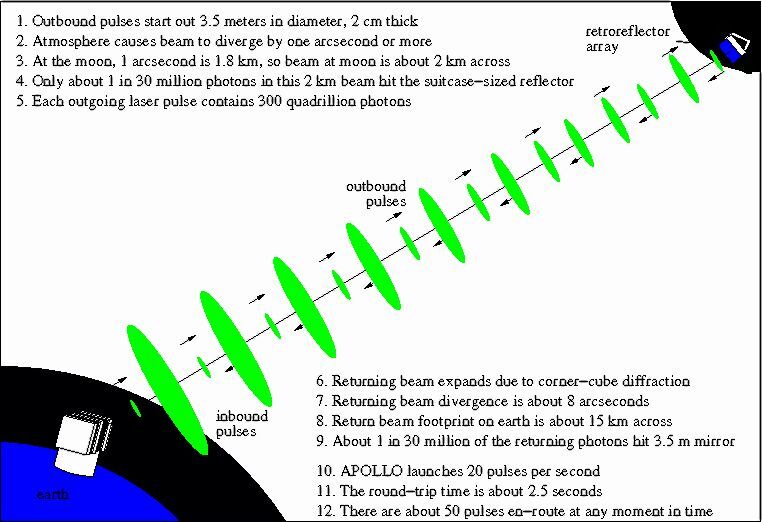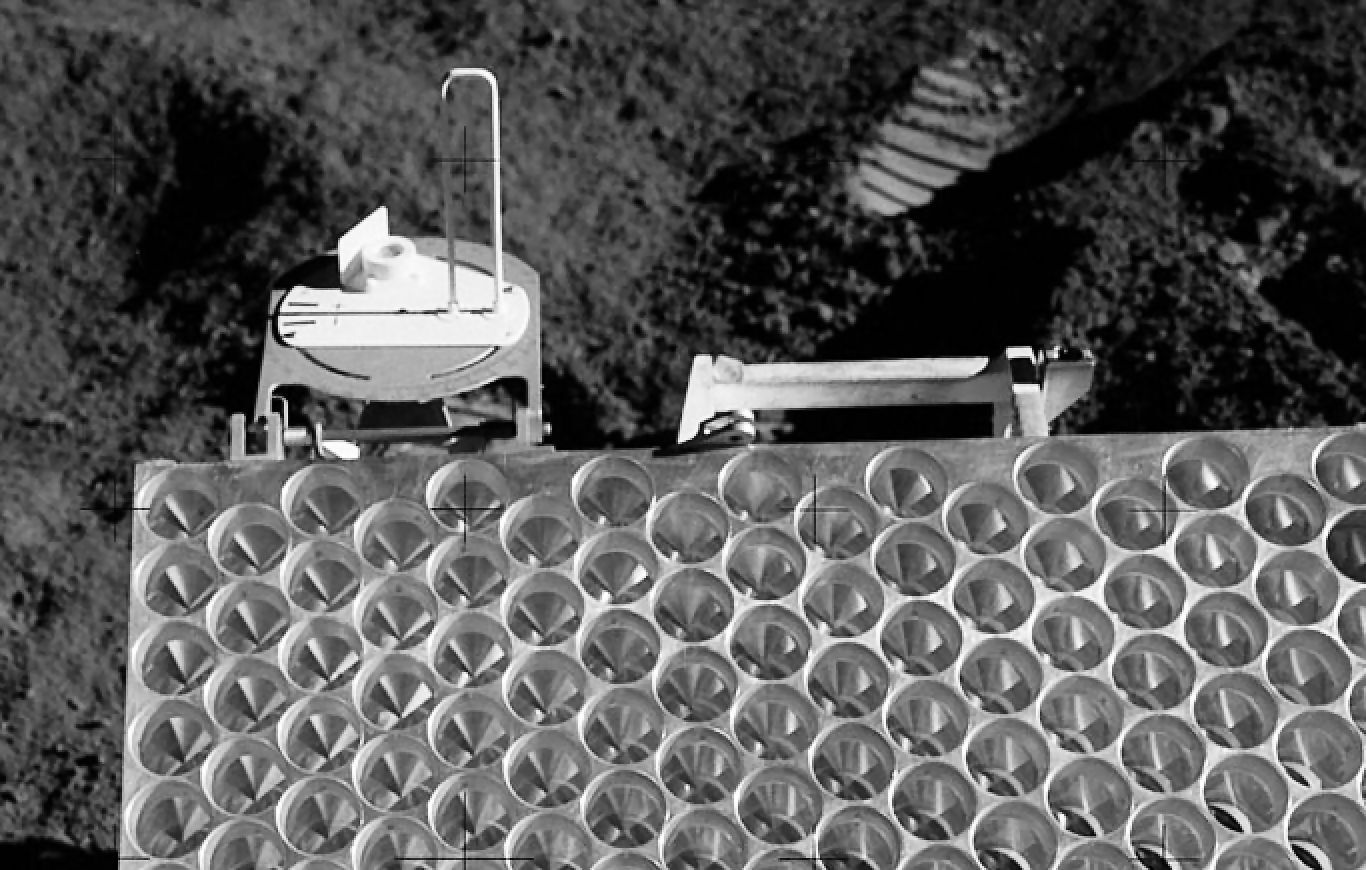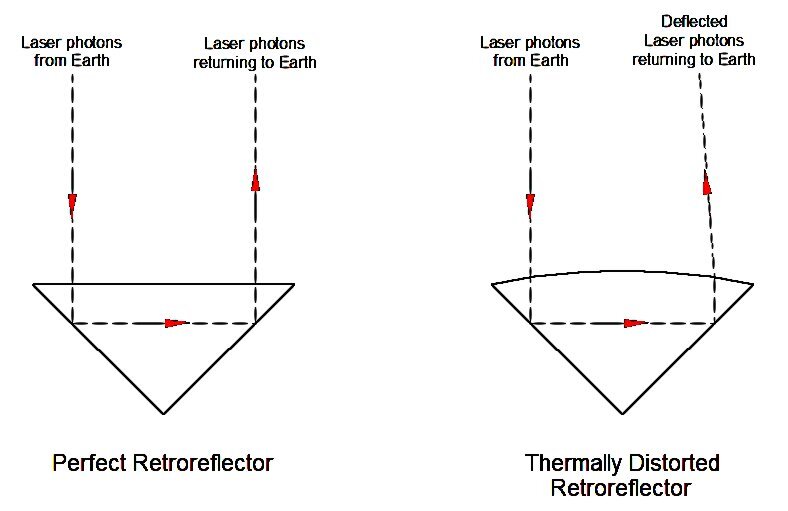The full moon has long been associated with any number of superstitions. While links with lunacy, violence, fertility, disasters, and the stock market have been thoroughly debunked, the possibility of a causative role in some arenas still remains a possibility. A lunar ranging study carried out using reflectors has long contended with the "Full-Moon Curse", a near-total fading of reflected signals during the full Moon. This Curse is real, and has now been explained.
Lunar ranges have been collected for decades, most recently by astronomer Tom Murphy's group at UC San Diego, who is using these data to carry out a stringent test of general relativity. Lunar ranging works by sending laser pulses from the Earth to the Moon and back, timing the duration of the round trip.

The observations are now carried out using a 3.5 m (140 in) telescope at New Mexico's Apache Point Observatory. Twenty 532 nm laser pulses, each having an energy of 115 mJ and a duration of 100 ps, are directed each second through the telescope onto the lunar surface. The pulses then strike retroreflectors left on the Moon by Apollo astronauts and on a Soviet lunar rover. These optical prisms precisely direct reflected light back along the path on which it arrived; that is, back to the original telescope where their arrival is timed.
The time required for the round trip can be measured to within a few picoseconds, allowing the distance to the Moon to be measured with a precision of about a millimeter (0.04 in). The level of precision is remarkable, considering that only one photon, on average, is detected in each return pulse – roughly 1 in 100 quadrillion photons sent from the telescope to the Moon.
In short, a very difficult experiment is being carried out brilliantly. Then appeared the Full-Moon Curse. On the night of the full Moon, the strength of the returned signal drops roughly tenfold. Not just once; the drop follows the lunar phases month after month.
Photons don't just disappear. To avoid detection, they must either be absorbed or misdirected. Moon dust is an obvious source for absorbing material, and indeed the prism surface appears to be about 50 percent blocked by dust. However, its effect on the photon return signal is essentially constant, as there appears to be no reason why dust should accumulate every full Moon, just to disappear the next day.

The actual reason turns out to be a bit more subtle, and depends on a tiny design detail that no one considered. As shown in the image above of a lunar retroreflector on the Moon's surface, the prisms are inset rather deeply into the retroreflector's surface. This means that the Sun's rays only strike the surface of the prisms when the Sun is high in the lunar sky – when the Moon appears fully illuminated from Earth.
Lunar dust, on average, is rather dark, absorbing about 93 percent of the light that hits it. When the Moon is full, the Sun's light hits the dust on the surface of the prisms, which does not occur on other days because of the insetting of the prisms. As a result, the dust, and the very front layers of the retroreflector prisms, heat up on the day of the full Moon.
In response to the temperature gradient across the prisms, both the shape and the homogeneity of the glass from which the prisms are made are compromised. This thermal response has rather the same effect as placing a very weak lens on the front of the retroreflectors.

This lensing effect defocuses the otherwise parallel light that emerges from the retroreflectors, making the return spot size larger on the Earth's surface. The telescope, which is tiny compared to the area over which the laser photons are returned to the Earth, therefore sees a smaller proportion of those photons. This decrease is expected only during full Moon.
It's a nice idea, but rather difficult to prove without going to the Moon's surface and making measurements. Then Prof. Murphy had an idea. If the Sun's heat was distorting the retroreflectors at full Moon, all he had to arrange to test that was to turn off the Sun, and see if the signal comes back.
Although turning off the Sun is a bit tricky, it happens naturally on the Moon's surface when we see a lunar eclipse. At that point, the Earth blocks the Sun's light from striking the Moon. Naturally, all lunar eclipses occur at full Moon.
Murphy's team eventually had good conditions for lunar ranging during a lunar eclipse. During the five and a half hour duration of the eclipse (a lunar eclipse is far longer than a solar eclipse, essentially because the Earth is larger than the Moon), the team reflected pulses from all the lunar retroreflectors. Before the eclipse, they saw the usual tenfold reduction in signal. When the progress of the eclipse put each retroreflector into the dark in turn, the full return signal returned. Finally, when the Sun again shone on the lunar surface, the signals fell to their usual full Moon level.
While these observations remain something short of complete proof of the mechanism, it does appear to confirm the effect is driven by the Sun's heating of the lunar apparatus. While the lunar ranging Full-Moon Curse is now put to bed, it is an important reminder that just because something happens on a apparently supernatural schedule doesn't mean it can't be real.
Source: UC-San Diego








